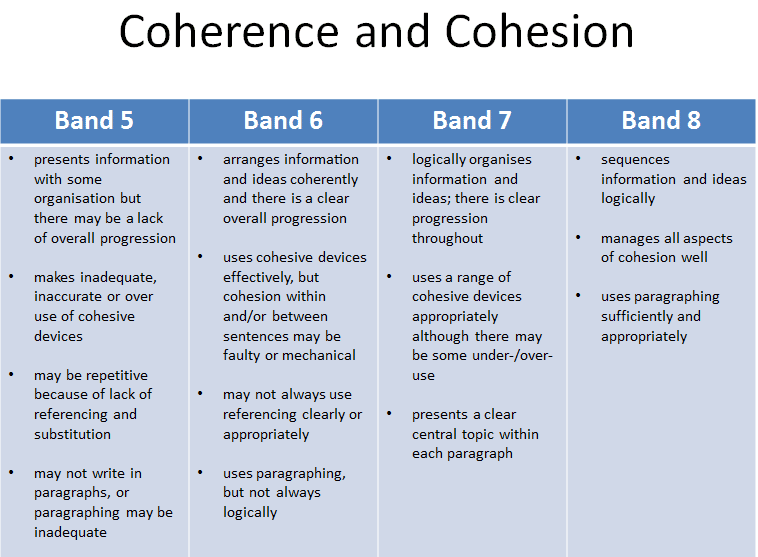

#Coherence explained plus#
The audience viewpoint is best embodied by Em, played by Swedish-born beauty Emily Baldoni, the outsider of the group who eventually resorts to extreme measures in order to survive.Ĭoherence demands patience and concentration from the viewer, plus leaps of faith that some will find implausible. Shooting in chronological sequence, Byrkit only gave his cast limited information about the narrative loops and swerves ahead, encouraging a semi-improvised naturalism that feels authentically tense.
#Coherence explained full#
Kristin Ohrn Dyrud‘s minimal score, full of drones and moans, amplifies the sense of creeping dread. Making a virtue of its limited resources, Coherence is shot in a hand-held, claustrophobic, focus-blurring style that manages to look both glossy and raw. Connoisseurs of vintage sci-fi might also cite Invasion of the Body Snatchers, the original Solaris and the cult British space shocker Journey to the Far Side of the Sun (aka Doppelganger). Shane Carruth‘s cerebral mind-bender Primer and Mike Cahill‘s lo-fi astrological fable Another Earth are obvious reference points too. What would happen if the borders between those alternate realities began to blur? If we ran into happier, smarter version of ourselves, might we even resort to killing them and taking their place?īyrkit cites The Twilight Zone as a key influence on Coherence. Too much plot detail risks giving away spoilers here, but Byrkit milks maximum suspense from theoretical physics ideas about “quantum decoherence,” notably the increasingly fashionable concept of parallel universes co-existing simultaneously, populated by multiple versions of ourselves. It slowly becomes clear that the fabric of reality has been radically remixed by the comet’s arrival. Electricity is soon restored inside the house, but outside the world remains in darkness. Marital tensions and sexual secrets sizzle just below the surface, but relationship drama is soon overshadowed by astrological weirdness when a comet passes close to Earth, shutting down power supplies and phone connections. A group of eight friends gather for dinner on the edge of an unnamed U.S. Journal of Autism and Developmental Disorders, 36, 27–43.The setup has the deceptively familiar feel of a classic stage play.
#Coherence explained update#
Enhanced perceptual functioning in autism: An update and eight principles of autistic perception. Mottron, L., Dawson, M., Soulieres, I., Hubert, B., & Burack, J. International Journal of Eating Disorders, 41, 143–152. An examination of the concept of central coherence in women with anorexia nervosa. Lopez, C., Tchanturia, K., Stahl, D., Booth, R., Holliday, J., & Treasure, J. American Journal of Psychiatry, 108, 23–26.

The conception of wholes and parts in early infantile autism. Autistic disturbances of affective contact. What aspects of autism predispose to talent? Philosophical Transactions of the Royal Society-Series B, 364, 1369–1375. Journal of Autism and Developmental Disorders, 36, 5–25.

The weak coherence account: Detail-focused cognitive style in autism spectrum disorders. Journal of Child Psychology and Psychiatry, 42, 299–307. Exploring the cognitive phenotype of autism: Weak “central coherence” in parents and siblings of children with autism I. Executive function deficits in Autism Spectrum Disorders and Attention-Deficit/Hyperactivity Disorder: Examining profiles across domains and ages. Happé, F., Booth, R., Charlton, R., & Hughes, C. The Quarterly Journal of Experimental Psychology, 61, 50–63. The power of the positive: Revisiting weak coherence in autism spectrum disorders. British Journal of Developmental Psychology, 15, 1–12. Central coherence and theory of mind in autism: Reading homographs in context. Journal of Experimental Child Psychology, 107, 377–393.įrith, U. fork”: Examining central coherence in autism, attention deficit/hyperactivity disorder, and typical development with a linguistic task. Philosophical Transactions of the Royal Society (Special Issue: ‘Autism: Mind and Brain’), 358(1430), 387–392.īooth, R. Disentangling weak coherence and executive dysfunction: Planning drawing in Autism and ADHD. Autism and abnormal development of brain connectivity. K., Allen, G., Beckel-Mitchener, A., Boulanger, L.


 0 kommentar(er)
0 kommentar(er)
